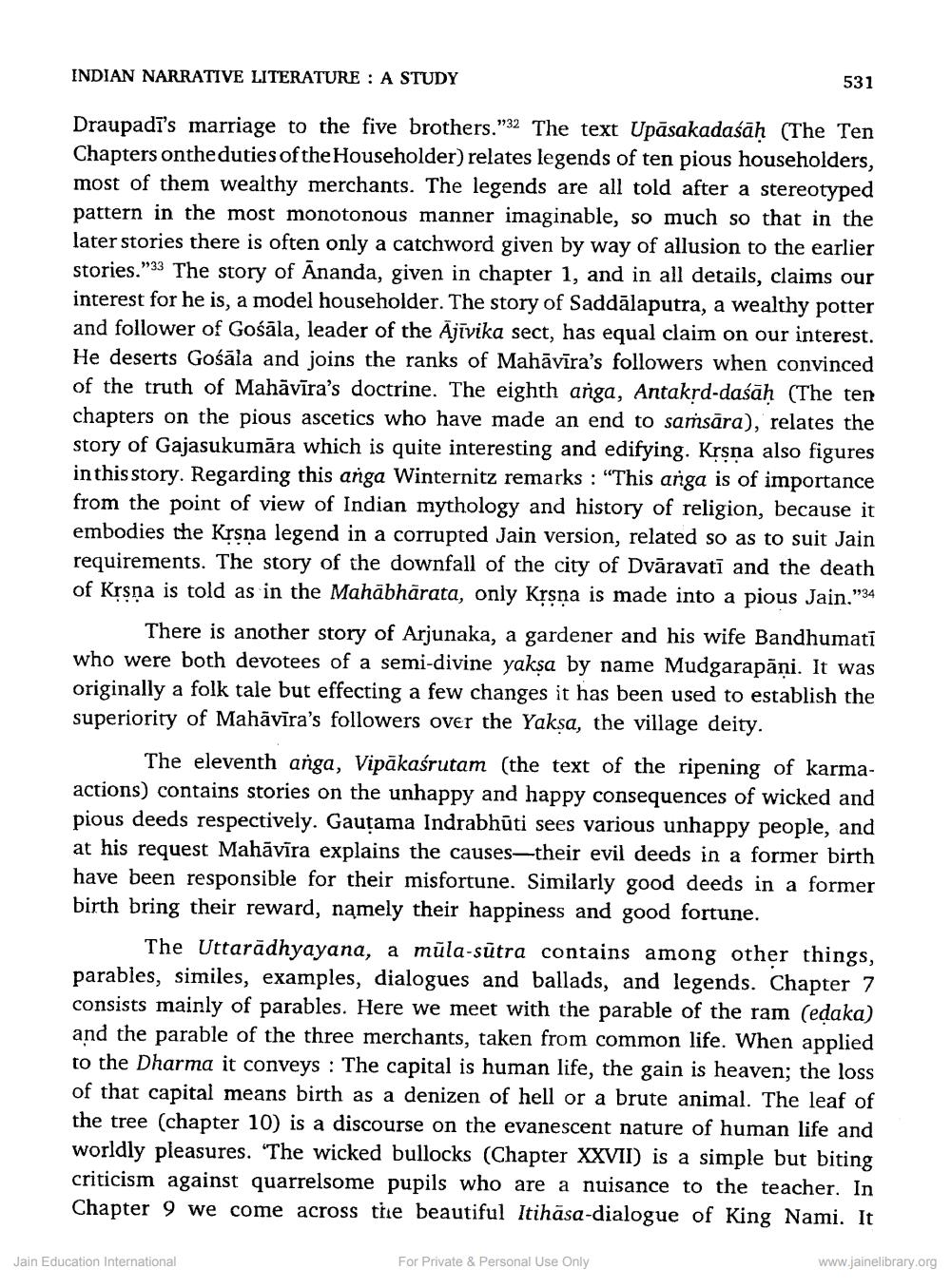________________ INDIAN NARRATIVE LITERATURE : A STUDY 531 Draupadi's marriage to the five brothers."32 The text Upasakadasah (The Ten Chapters onthe duties of the Householder) relates legends of ten pious householders, most of them wealthy merchants. The legends are all told after a stereotyped pattern in the most monotonous manner imaginable, so much so that in the later stories there is often only a catchword given by way of allusion to the earlier stories."33 The story of Ananda, given in chapter 1, and in all details, claims our interest for he is, a model householder. The story of Saddalaputra, a wealthy potter and follower of Gosala, leader of the Ajivika sect, has equal claim on our interest. He deserts Gosala and joins the ranks of Mahavira's followers when convinced of the truth of Mahavira's doctrine. The eighth anga, Antakrd-dasah (The ten chapters on the pious ascetics who have made an end to samsara), relates the story of Gajasukumara which is quite interesting and edifying. Krsna also figures in this story. Regarding this anga Winternitz remarks : "This arga is of importance from the point of view of Indian mythology and history of religion, because it embodies the Krsna legend in a corrupted Jain version, related so as to suit Jain requirements. The story of the downfall of the city of Dvaravati and the death of Krsna is told as in the Mahabharata, only Krsna is made into a pious Jain."34 There is another story of Arjunaka, a gardener and his wife Bandhumati who were both devotees of a semi-divine yaksa by name Mudgarapani. It was originally a folk tale but effecting a few changes it has been used to establish the superiority of Mahavira's followers over the Yaksa, the village deity. The eleventh anga, Vipakasrutam (the text of the ripening of karmaactions) contains stories on the unhappy and happy consequences of wicked and pious deeds respectively. Gautama Indrabhuti sees various unhappy people, and at his request Mahavira explains the causes-their evil deeds in a former birth have been responsible for their misfortune. Similarly good deeds in a former birth bring their reward, namely their happiness and good fortune. The Uttaradhyayana, a mula-sutra contains among other things, parables, similes, examples, dialogues and ballads, and legends. Chapter 7 consists mainly of parables. Here we meet with the parable of the ram (edaka) and the parable of the three merchants, taken from common life. When applied to the Dharma it conveys : The capital is human life, the gain is heaven; the loss of that capital means birth as a denizen of hell or a brute animal. The leaf of the tree (chapter 10) is a discourse on the evanescent nature of human life and worldly pleasures. "The wicked bullocks (Chapter XXVII) is a simple but biting criticism against quarrelsome pupils who are a nuisance to the teacher. In Chapter 9 we come across the beautiful Itihasa-dialogue of King Nami. It Jain Education International For Private & Personal Use Only www.jainelibrary.org




